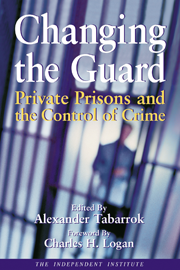Fairfax, Va.—Fear is ruling the financial markets. Billions of dollars have been lost in mortgage-related investments. The Federal Reserve worked madly over the weekend to engineer a takeover of Bear Stearns and avert a systemic meltdown. But the big fear remains. How low will house prices go?
If prices continue to fall, mortgage defaults will move well beyond the subprime sector. Trillions of dollars in losses for investors are not impossible. But that doesn’t mean they are inevitable.
In 1997, inflation-adjusted house prices were close to their average levels over the previous half-century. Only four years later, the price of the average home nationwide exceeded anything ever seen before in the United States. Prices continued to rise for another five years, peaking in 2006 at nearly twice the average price in 1997 (as can be seen on the graph on the bottom right, which is based on data collected by the Yale economist Robert Shiller). If house prices are heading back to the levels seen in 1997, then we are facing catastrophe.
But there are good reasons to believe that much of the increase in prices was a rational response to changes in fundamental factors like interest rates and supply. The deeper fundamentals continue to suggest strong housing prices for the future.
Sure, speculation did run rampant toward the end of the housing boom. (The debut of the reality television show “Flip That House” on Discovery Home Channel, followed shortly by “Flip This House” on A&E, was a clear sign that the boom’s end was near.) Prices will fall further, especially in the speculative developments built on the outskirts of the major cities. So yes, we overshot the fundamentals.
Still, especially in coastal areas where zoning regulations have restricted the supply of land that developers can build on, house prices were driven up by increasing population, low interest rates and strong economic growth.
More and more people want to live on the coasts, but land is hard to come by in places like Manhattan and San Francisco. Cities and regions built on ideas—like Boston, Los Angeles, New York and the San Francisco Bay Area—have grown even as areas built on manufacturing, like Detroit and the Rust Belt, have declined. And of course, government isn’t getting any smaller, so Washington and its suburbs, another hot spot of rising house prices during the boom, will continue to grow.
Even in places where land seems plentiful, zoning and other land-use regulations have made it scarce. To meet demand, we should encourage high-density development, but homeowners fought to restrict housing supply when house prices were increasing. Now that house prices are falling, the incentives of owners to restrict supply are even stronger.
Several studies estimate that the average house prices of 2004 were close to fundamental levels, so we may see prices stabilize near that level.
Granted, a catastrophe is not impossible—it did happen in Japan. House prices shot up in Japan in the late 1980s, and by 1999 they had collapsed. The graph on the top right, of Japanese and American house prices, does make for a worrying comparison. (The data come from the Standard & Poor’s/Case-Shiller national home price index and a similar index for Japan.)
But the resemblance isn’t as close as the graph makes it appear. The Japanese run-up in home prices was faster and reached higher levels than the one in the United States. In addition, the Japanese population at the time wasn’t growing, and today it’s shrinking. (None of the major presidential candidates favor drastic reductions in immigration, so population growth in the United States will continue.) As a result of these and other problems, the Japanese economy was moribund from 1992 to 2002, which kept housing prices low.
There are two very real problems for the housing market: tougher credit conditions and slower growth. Here the United States faces a self-fulfilling prophecy problem.
If the financial markets can predict where and when house prices will stabilize, then credit conditions can quickly return to normal, the economy can expand and house prices will indeed stabilize.
But if the financial markets remain uncertain about when the decline in house prices will end, then fear will tighten credit even further, which would strangle the housing market and generate even more fear.
We have nothing to fear but fear itself, but fear itself can be pretty scary. The best way to overcome fear is to look at the long run. The typical homebuyer keeps a home for 10 years or more, so there is time for those who bought in 2005 and 2006 to weather the current decline in prices. Those who bought at the top are unlikely to see any windfalls from house appreciation, but they will not necessarily suffer from buyers’ remorse. Owning a home has its advantages: the deduction on mortgage interest is substantial and too much of a sacred cow to ever be repealed, and there is a certain security and satisfaction to owning your own home.
The collapse of housing prices certainly feels painful, and for some homeowners, it will be. But the houses are still there, as good as ever. Most of the gains going up were paper gains, and most of the losses going down are paper losses.
The strength of an economy comes, fundamentally, from what it can produce. Can America still produce homes? Yes. Can America still produce desirable urban and suburban areas that people are willing to pay a fortune to live in? Yes.
That’s the real bottom line. The United States has some of the most valuable real estate in the world. Markets should not forget that.












